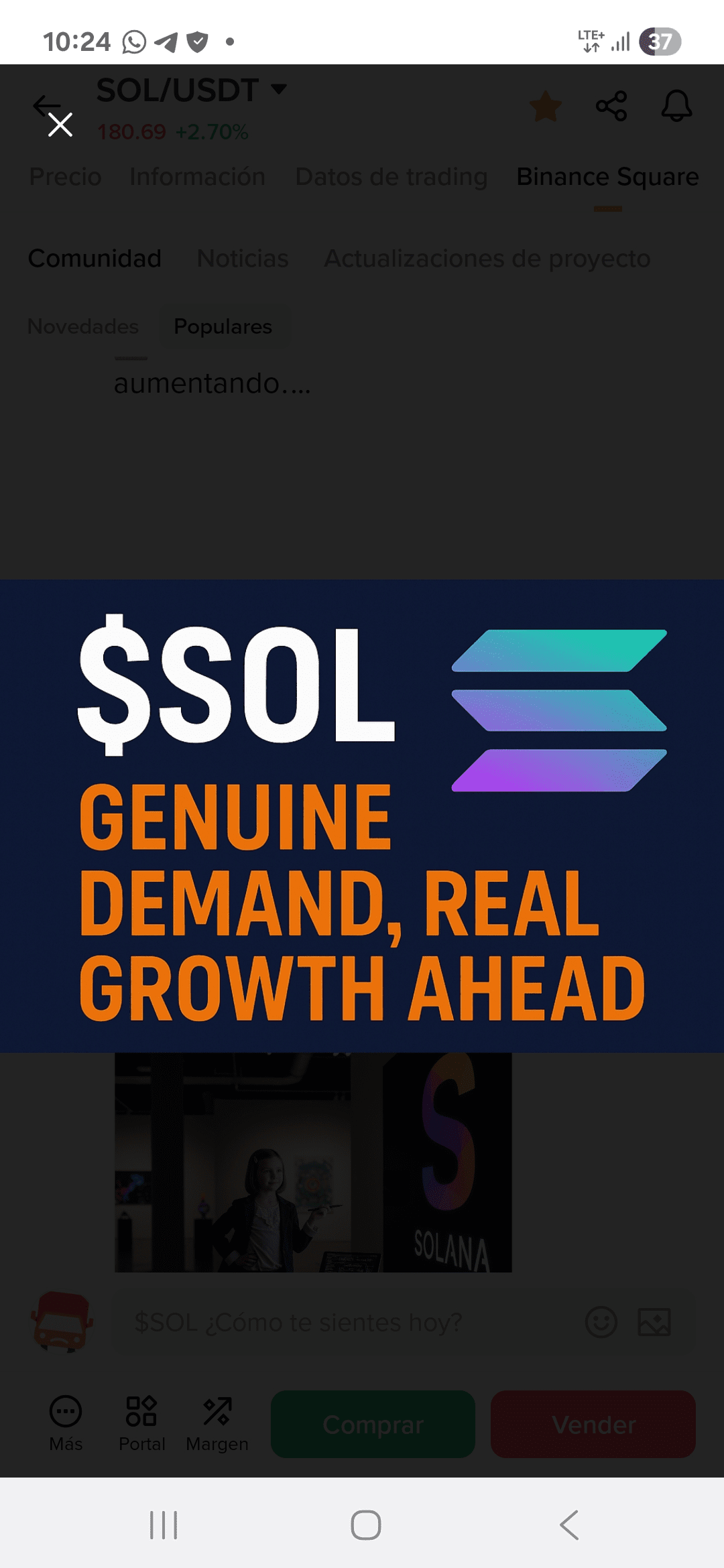$SOL The user has provided me with an image of a cryptocurrency application screen, showing a section to stake SOL (Solana). Below, I analyze the elements of the image and interpret them to give an informed response.
Elements in the image:
* Title: "Stake SOL" - It is confirmed that the main action is the staking of the cryptocurrency SOL.
* Highlighted messages:
* "SIGN farming is now available!"
* "Airdrop rewards for SIGN APR improvement accumulate and can be claimed daily."
* A cryptocurrency called "SIGN" and an "airdrop" of rewards are mentioned. This implies that, in addition to staking SOL, there is a promotion or additional benefit related to SIGN.
* User data:
* "My SOL staked": "0.06920182 SOL" - Shows the amount of SOL the user currently has staked.
* "30 days rewards": "0.00024008 SOI" - Shows the rewards accumulated in 30 days. The ticker "SOI" could be a derived token or a typographical error in the application for "SOL."
* Key performance information:
* "Reference APR": "5.81%" - This is the "Annual Percentage Rate" or reference interest rate. It is the theoretical yield that can be obtained in a year.
* "Conversion Rate":
* "1 SOL ≈ 0.93664405 BNSOL"
* "1 BNSOL = 1.06764143 SOL"
* These values suggest that staking is not done directly with SOL but is converted into a derived token called "BNSOL" (likely "Binance SOL," given the style of the interface resembling Binance). This type of staking is known as "liquid staking."
What is cryptocurrency staking?
Staking is a way to earn rewards for holding (or "locking") certain cryptocurrencies in a digital wallet. It works similarly to a savings account that generates interest, but in the cryptocurrency world, the rewards come from validating transactions on a blockchain network that uses the "Proof of Stake" model, as is the case with Solana. By staking, you help secure the network.
Analysis and recommendation:
When someone asks me if something is "recommended," the answer is not a simple "yes" or "no," as it depends on personal circumstances and individual goals. Here is a complete analysis with the pros and cons, and points to consider:
Pros:
* Generation of passive income: Staking allows you to earn rewards (in this case, a 5.81% reference APR) on the cryptocurrencies you already own, without having to sell them.
* Contribution to network security: By staking, you are helping the Solana network to be more secure and decentralized.
* Additional benefits: The image mentions "SIGN APR improvement airdrop" and "SIGN farming." This suggests you could earn additional rewards in other tokens, increasing your earning potential.
* Flexibility (liquid staking): By converting your SOL to BNSOL, the image indicates that it is a form of "liquid staking." This could mean that BNSOL can be used in other DeFi protocols to earn even more yields, although this is not explicitly detailed.
* Simplicity: The interface looks very user-friendly, and the staking process is described in three simple steps.
Cons and Risks:
* Price risk: The value of SOL is volatile. Even if you earn 5.81% on SOL, if the price of SOL drops more than 5.81% in a year, your total investment in terms of fiat currency (like dollars or euros) could decrease.
* Platform risk: You are trusting your assets to the platform that offers the service (probably Binance or a similar exchange). Although they are large platforms, there is always a risk of hacking, technical failures, or insolvency.
* Risk of the derived token (BNSOL): The value of BNSOL is linked to SOL. In theory, 1 BNSOL should be worth 1 SOL. However, there may be a "de-peg" where 1 BNSOL trades below 1 SOL.
* Liquidity lock: Sometimes, staking rewards cannot be claimed immediately, or a "unbonding" or "unlocking" period is required to withdraw the SOL. The image does not specify the lock time but indicates that rewards can be claimed daily.
* Complexity and hidden costs: It is important to read the fine print. There could be fees from the platform or protocol, or taxes on the earnings generated.
Conclusion and recommendation:
Staking SOL with an APR of 5.81% is an interesting option for those who already own SOL and want to generate passive returns on their assets.
I recommend you consider it if:
* You are a SOL holder: If you intended to hold your SOL long-term, staking allows that money to "work" for you instead of being idle in a wallet.
* You understand and accept the risks: You are aware that the price of SOL may decrease and that your capital is exposed to market volatility.
* You are comfortable with the platform: You trust the platform (exchange or wallet) that offers the service.
I do not recommend it if:
* You do not want to assume market risk: If you cannot tolerate the price volatility of SOL.
* You need immediate liquidity: If you think you will need to sell your SOL at any moment and do not want to wait for the possible unlocking time.
Before making a decision, it is crucial to research further about the platform and the workings of BNSOL and SIGN. Read the terms of service, check for any fees, and ensure you understand all the risks involved.




